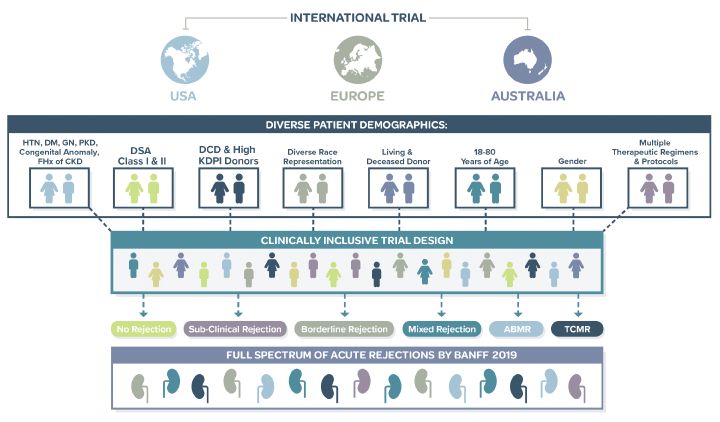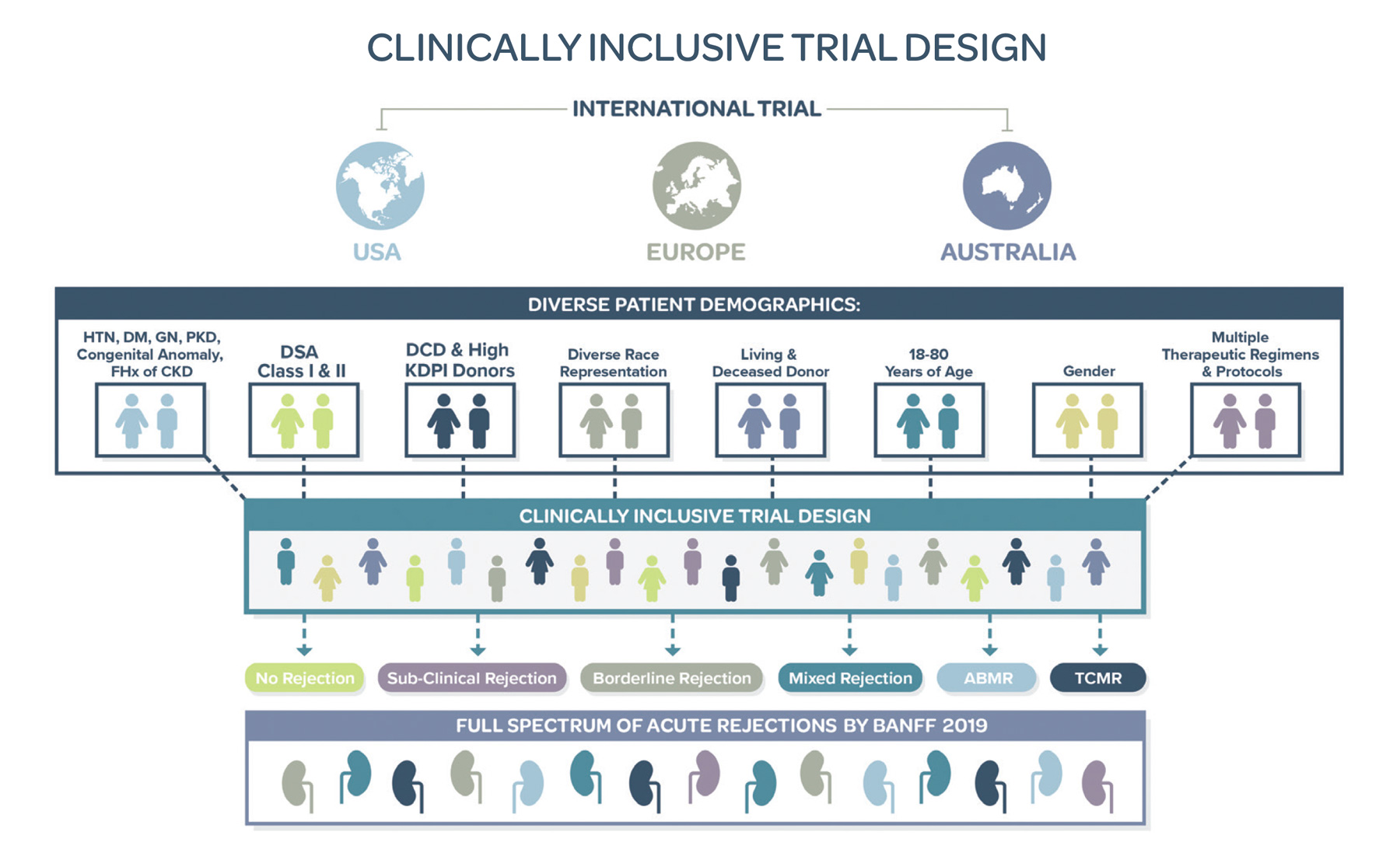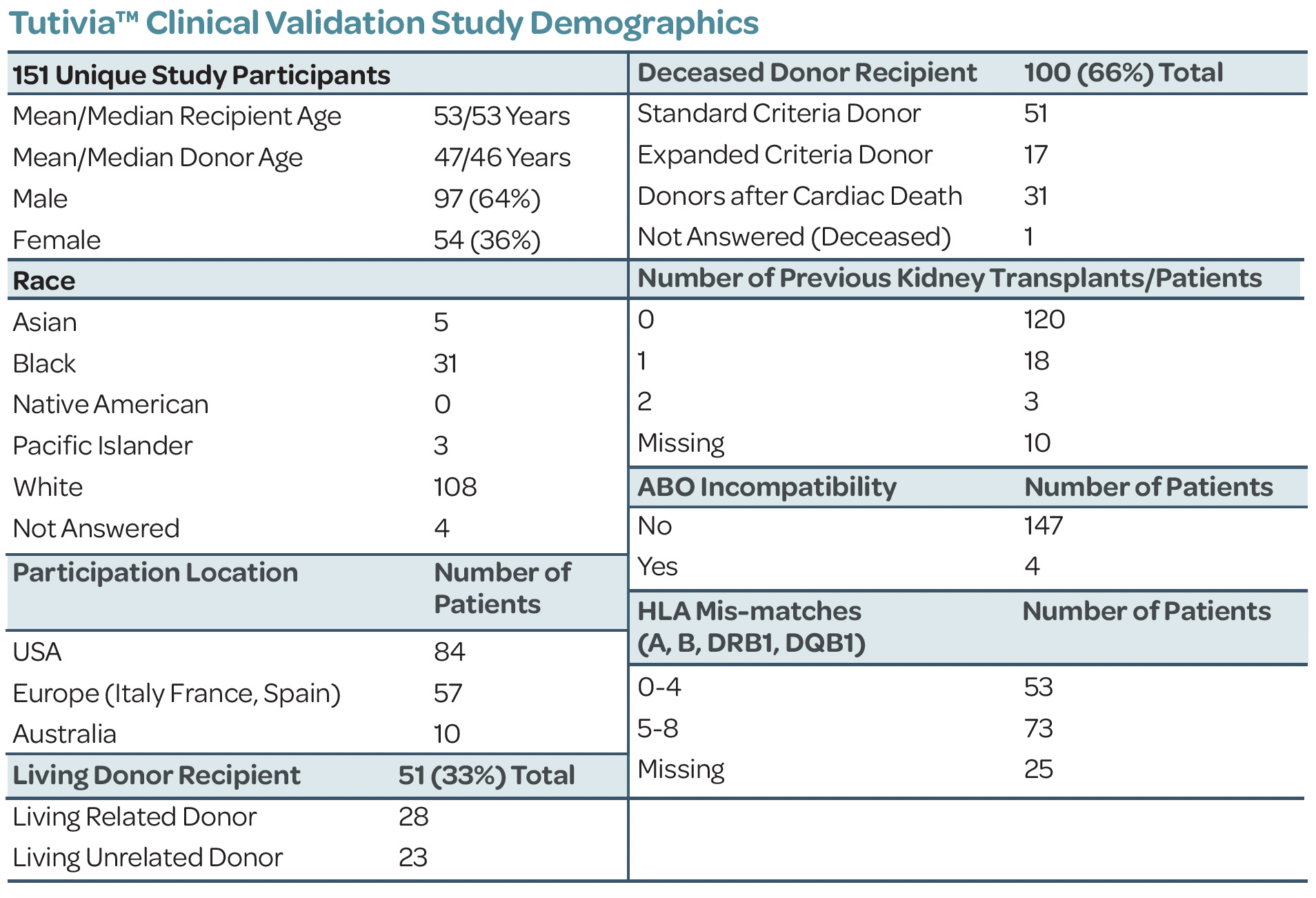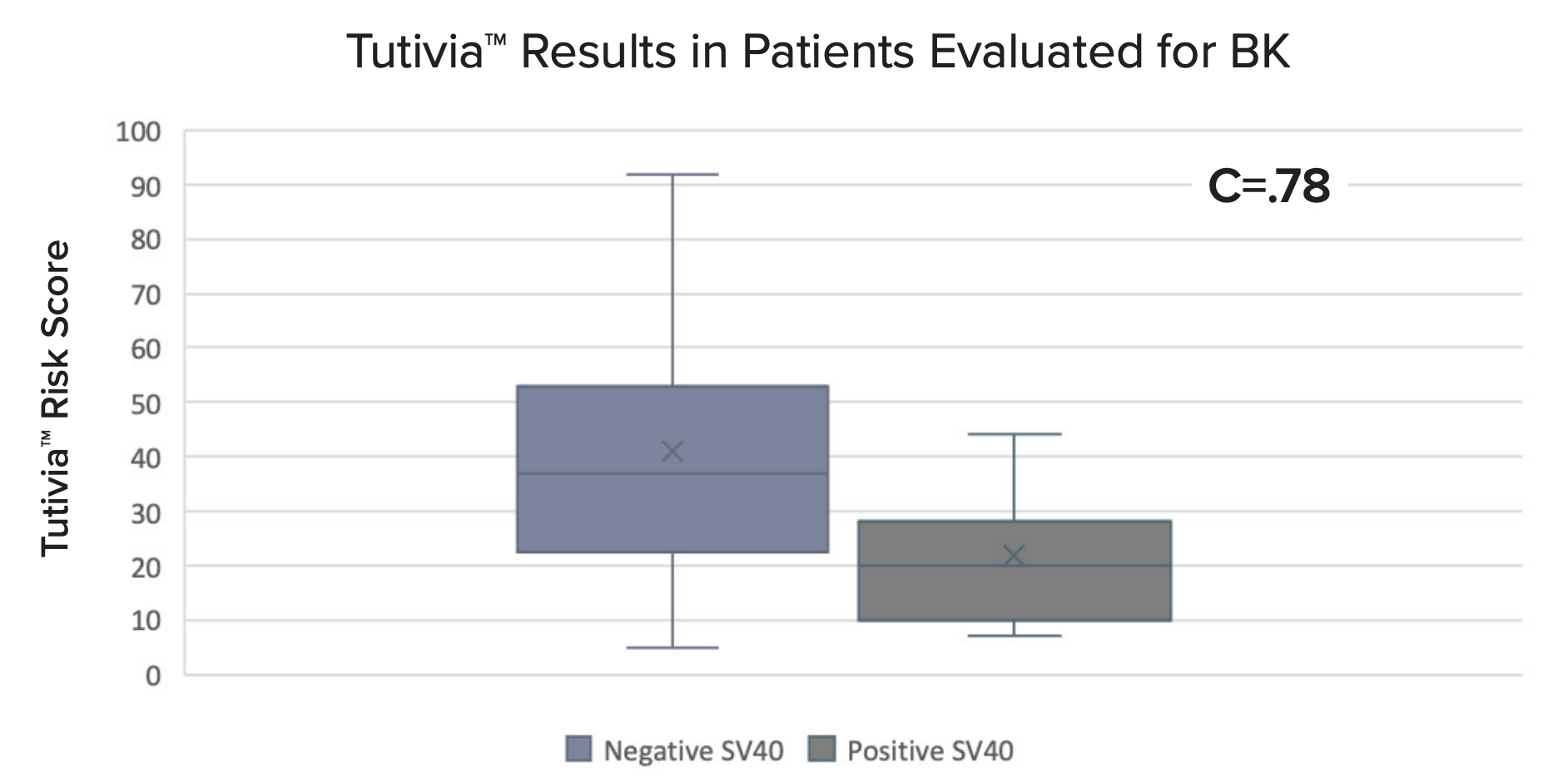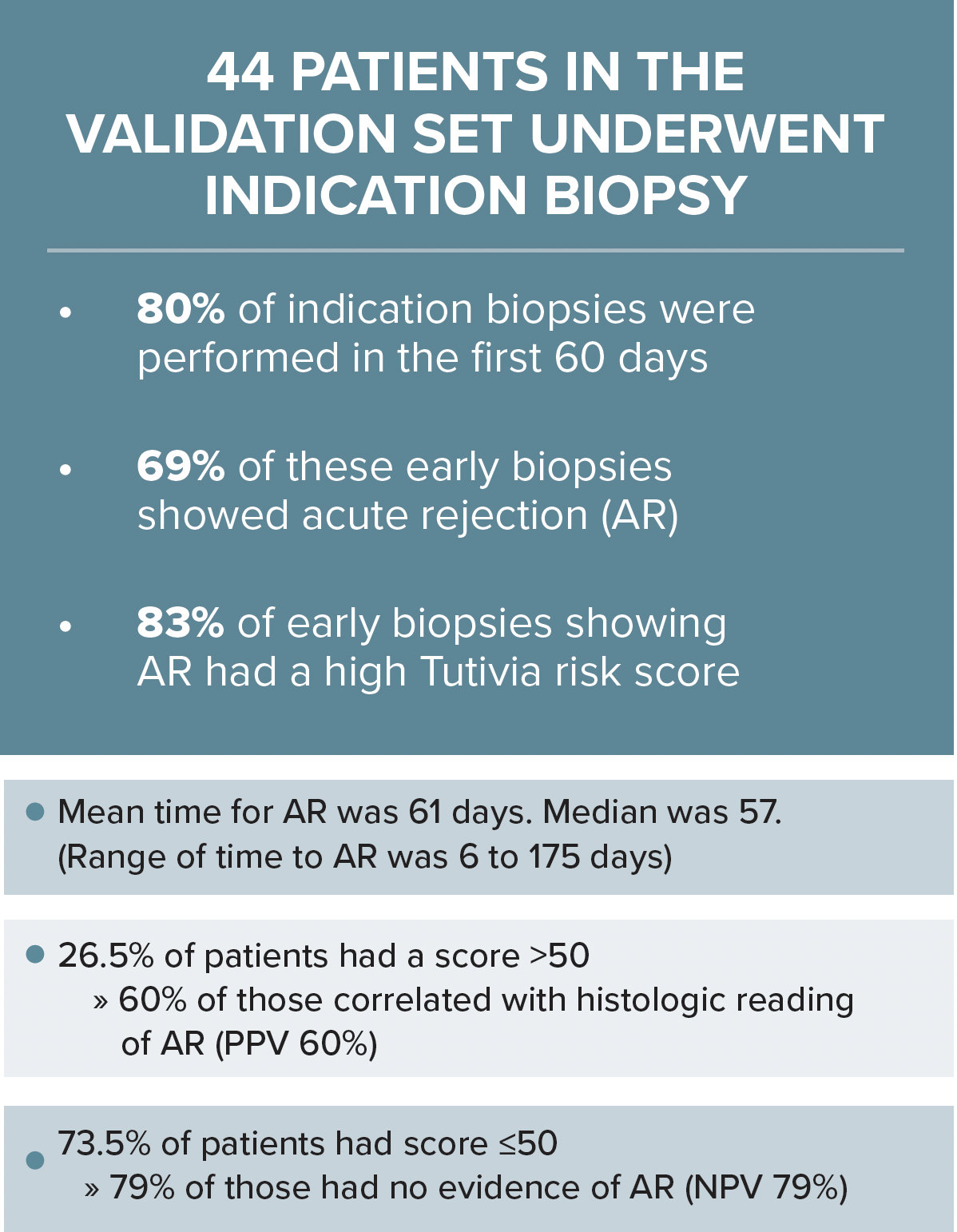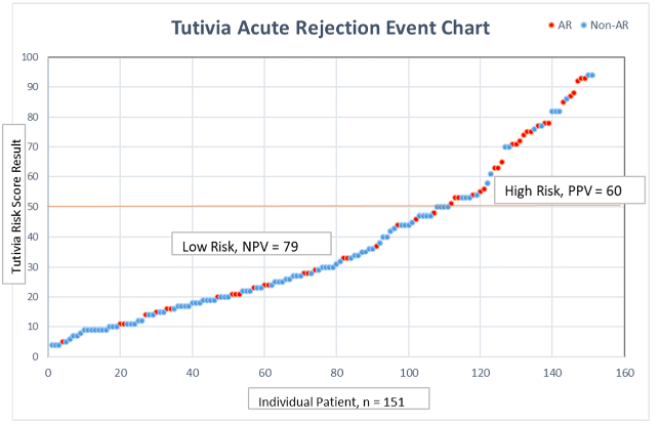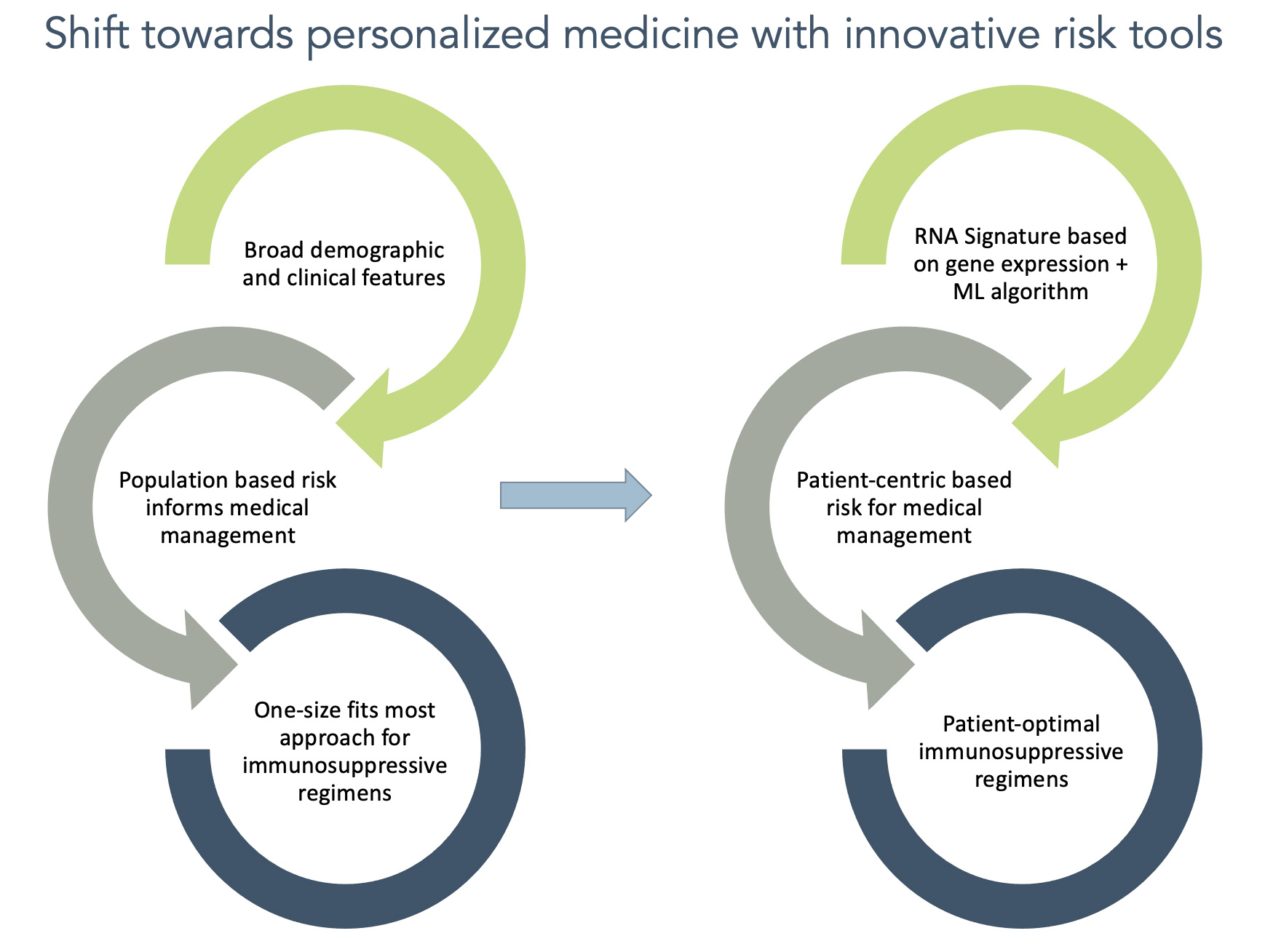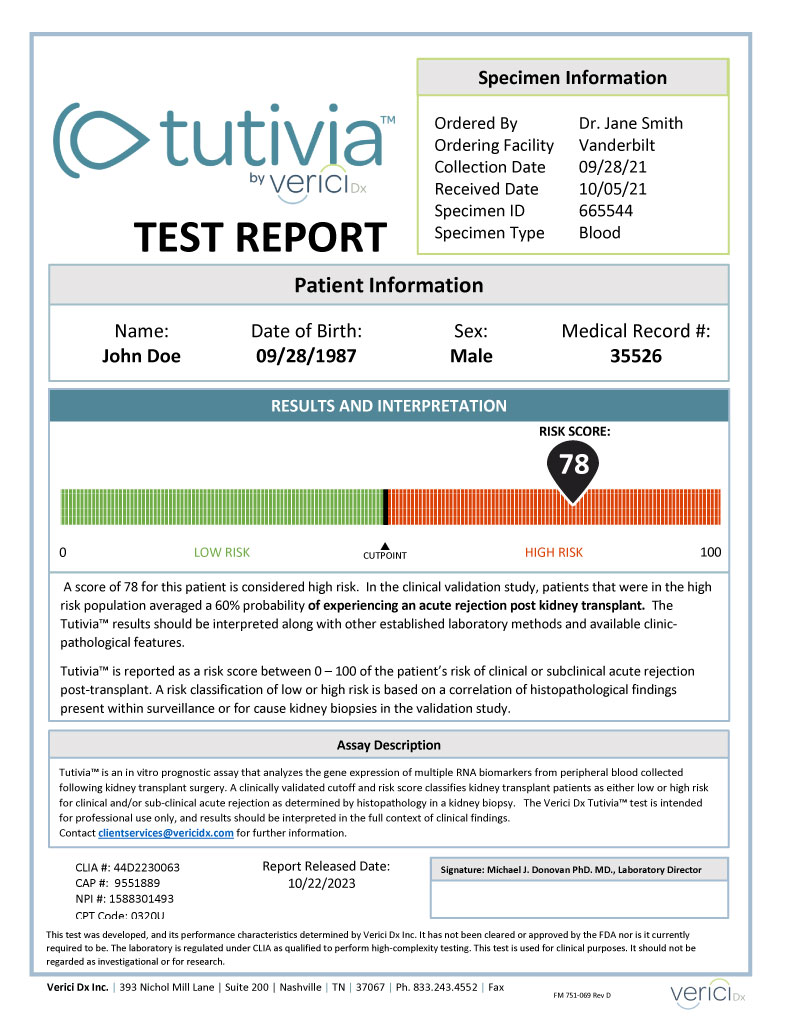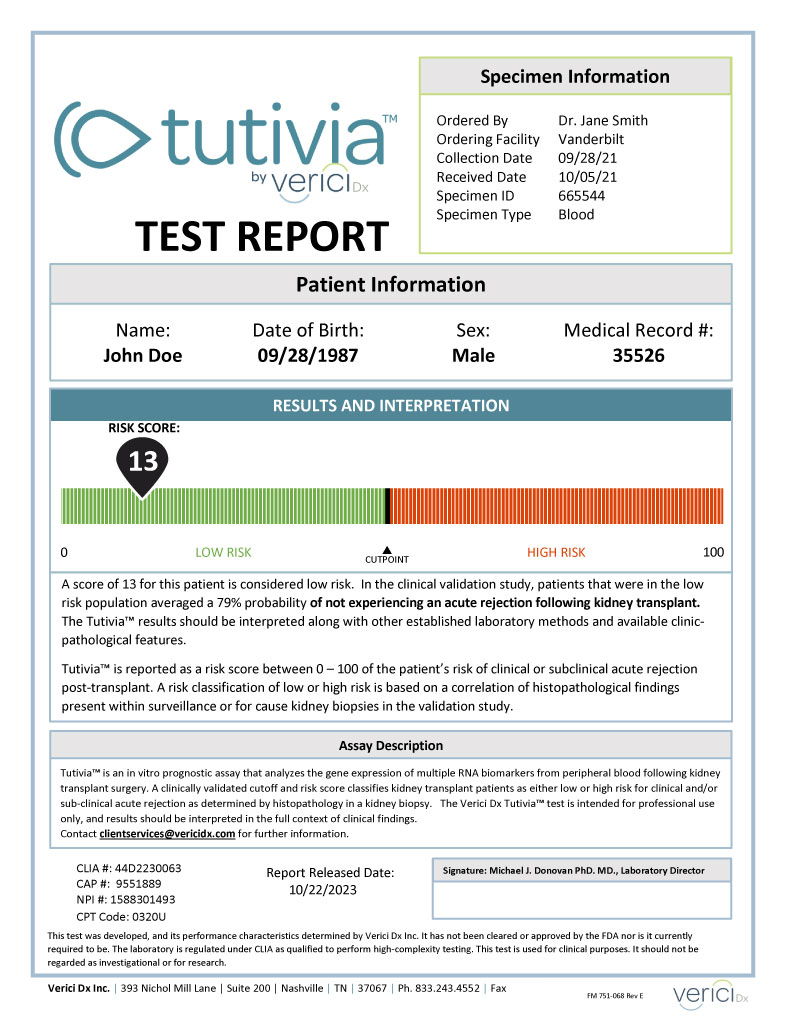Tutivia™ was studied as a prospective, multicenter (13 contributing transplant sites), blinded, international trial that allowed for the inclusion of diverse populations and broad diversity in care management practices; while allowing blinding to protect from the introduction of biases; thereby producing robust and reliable results for clinical integration.
The complexity of issues facing clinicians in their clinics was reflected as much as was possible in the study design.



